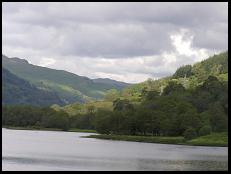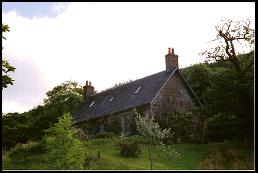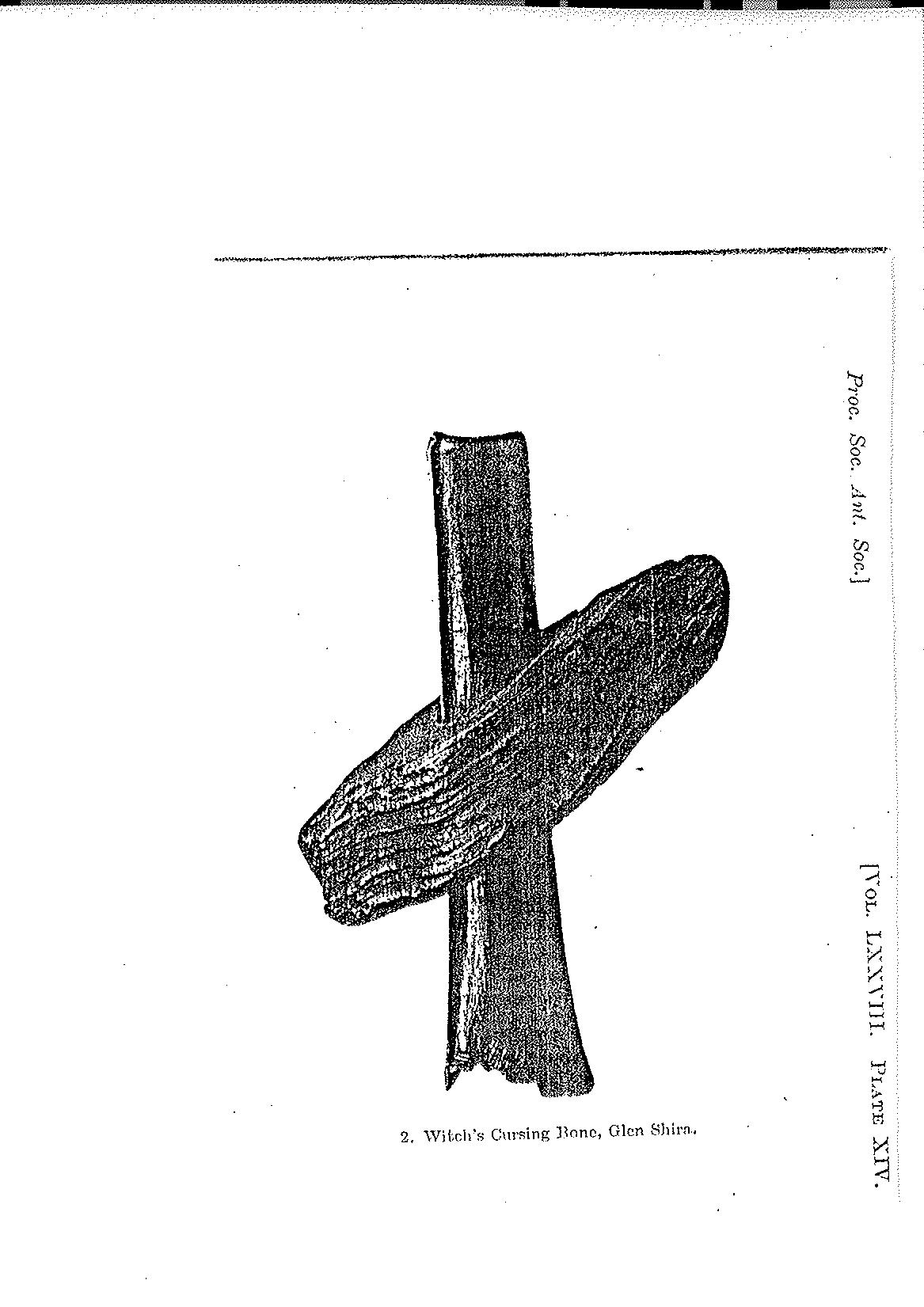|
|
Alexander McNuier 1742 - ?
Our next pair of ancestors may have been very interesting people, but unfortunately a positive correlation cannot be made.
Glenaray O.P.R. of 16/10/1742 states "Alexander to John McNuier and Janet Clerk in Parish of Glenaray" At that time his
parents would have been in Parkhead. Alexander married Catherine Ferguson on 8/2/1759 and they are listed as tenants at
Elrigmore 1760 - 1768.
At the time of their marriage, Alexander was 16, and Catherine was 19 yrs old. Apparently this was relatively common
at the time. According to Frazer (pg 119 "History of the Burgh of Inverary"), "while these great changes were taking place
in the town (moving the town to a new site), many of Inveraray's younger sons were away at the wars. Some of them fell in
hopeless charges against the stockade at Ticonderoga in July 1758. The French was continued indefinitely, claiming a
quota of the youths of Inveraray in each generation.". So maybe at 16, the remaining men were already men and ready to
settle down safely with a slightly older mate.
Of their two children, John was baptised 19/9/1760 and of our ancestor Archibald, the O.P.R. states "Archibald - son to
Alexander McNuier in Elrigmore and Katherine Ferguson his spouse was born 27/12/1762, baptised 30/12/1762 by Mr Alex.
Campbell." Alice Collins notes that this was the only Archibald to a McNeur in the O.P.R. The third Duke of Argyll who
died in 1761 was Archibald as was a brother of Katherine Ferguson. Elrigmore was a croft at the head of Glen Shira which
meets Loch Fyne just north east of Inveraray.
Catherine Ferguson's birth is recorded in the Glenaray O.P.R. as "17/12/1739 Catherine daughter to Duncan Ferguson in
Inveraray and Christain Sincklair was baptised. Note: the said Duncan Ferguson did not come to book the name in due time"
It has been suggested that this may have been due to a shortage of funds. Duncan was in Inveraray in 1739, Peninore 1730,
and Bralechan in 1736.
It is here that we move from recorded fact to supposition - When Joyce and I visited Inveraray in 1952, we met an elderly
gentleman, Mr McIntyre, a local historian. The only McNuiers he spoke of were Sandy and Catherine. Sandy was a gate keeper
for the Duke of Argyll's estate. He was fond of drinking whisky and apparently talked to the fairies. One night he was
walking home with a jar of whiskey on his shoulder when it fell and broke so he lapped up what he could from the road.
He said the last of the McNuier family in Inveraray was Catherine. She was regarded as a witch and he had obtained her
wooden chest which he used to scare the children.
Could these be our Alexander and Catherine Ferguson in their later years? Certainly they could not still have been alive
when Mr McIntyre was born and there were McNuiers in Inverary after Catherine, but these may have been the last of historical
interest. Alice Collins spoke to a researcher in Inverary who claimed Mr McIntyre was known for his "tall stories", and she
could find no person or evidence to support or refute the theory that our Catherine was a "witch". But it makes a great story!
We have a note in a book by Neil Munro and the photo and record from the proceedings of the Scottish Society of Antiquaries
of Scotland
regarding the witch of Glen Shira and her cursing bone. They may or may not relate to our Catherine Ferguson
Extract from the Proceedings of the Society of Antiquaries of Scotland Vol.78 (1943-1944) pg141:
Witch's Cursing-bone (Pl. XIV, 2), consisting of the marrow bone of a deer or sheep, stained deep brown by peat,
and fixed through a
daimond-shaped piece of bog oak. It was formerly the property of a reputed witch living at the head of Glen Shira,
Argyll. According to the local tradition, collected by the late Lady Elspeth Campbell, 'When the "witch" wanted to
"ill will" one of her neighbours, she went out with her bone between sunset and cock-crow and made for the neighbours
croft. She did not go to the dwelling-house, however, but to the hen house and seized the hen that sat next to the
rooster (his favourite), thrawed its neck, and poured its blood through the cursing bone, uttering her curses the while.'
On the death of the witch, only the parish minister of Inveraray was brave enough to enter her house. He
took away the cursing bone, which is now in the Museum of Antiquities
Extract from a letter from the Scottish archivist Donald Beaton to Alice Collins.
Back O' Hill, Houston
Renfrewshire
Scotland
11-6-91
Dear Alice,
The McNeuirs in Elrigmore, or Glen Shira in general, they were never one of the major names of the glen (my article
on the subject has appeared in various journals, even "Cruachan" I believe, the journal of the Clan Campbell in Australia)
They were Turner of Drimlee, MacNicoll of Elrigmore, MacKeller of Kilblaan, MacKellar of Mann, Munro of Stuckogoy, and
McNockaird (MAC-NA-CAIRD) or Sinclair of Coufochan. There were other families, the McKellars in Stucksgarden being one.
Most of the descendants of these families are now in Australia, as we shall see later. If not in this letter then in future
ones, I'm sure.
The McNeuirs were in Glen Shira from olden times. The Clan Macnachten or Mcnaughton had the Glen at one time.
They were Episcolpalians and their clanspeople went to fight with the Presbyterian Campbell adherents.
The McNeuirs were McFarlane clanspeople; when that clan was largely dispersed some of them settled in the vicinity of
Inveraray. Others called themselves Macnair and settled across Loch Fyne in Cowal. Some of them anglicised their name to Weir.
So much for the original background; your own family, as far as I'm sure you already know, appears as:
Alexander McNuier and Catherine Ferguson both in this parish (proclaimed) 27 January and married 8 February 1759.
John, son of above, baptised 19 September 1760 at Elrigmore.
You ask if this was the same cottage as appears in the Glen as Elrigmore today and the answer is "probably yes"
It is hard to say for sure. The history of the Elrig, mor and beog is that they were held by the McNicolls up until
about 1780 (from c1630). Old Elrigmore of the McNicoll's time was demolished in the 5th Duke's day, and a new farm and
byre was built. This is called Elrig today, and another new house now also stands there. Then a lodge was built further
down the Glen, and in mid 19th century was called "New" Elrigmore (it is now Ben Buidhe House). After this the cottage,
which was rebuilt post 1780 (when gable chimneys first appeared on everyday houses) became "Old" Elrigmore.
Since the cottage is a Campbell of Argyll type shepherd's cottage, it has been rebuilt in the post 1780's style -
but probably on the site of the earlier house. How's that for a bit of confusion?
The earliest map of the Glen is Roy's survey of the mid 1700's, and quite a few places have disappeared, with others
renamed in the following 100 years. Circa 1755, there were more than 250 people in the Glen hence Neil Munro's romantic views.
His grandfather was the Argyll Estates' shepherd at Stucksgarden for a time, also a rebuilt shepherds cottage of the same
period. Most of them, like Elrigmore, are unfortunately holiday homes today."
More follows but not relevant to this story.
|


Glen Shira 2011.
Now a private deer park and power station, so inaccessible to the public.

This cottage at Elrigmore, Glen Shira, is a "Cambell of Argyll" type shepherds cottage.
It has been rebuilt in the post 1780 style but probably on the site of the earlier house.
When Kathy visited in 2011,
the road into Glen Shira had become a private road leading to the Duke of Argyll's deer park.
So could not check if the cottage is still there.

Witch's cursing bone from Glen Shira
|